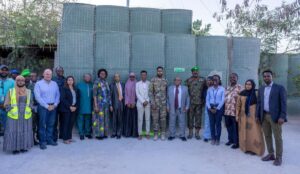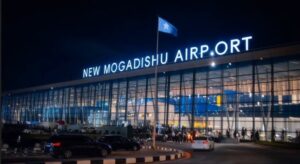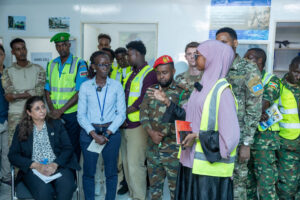Introduction
Somalia’s aviation industry is poised for rapid growth—new routes, cargo opportunities, and regional partnerships are on the horizon. But without well-trained pilots, technicians, and safety officers, these plans remain grounded. In this post, we’ll explain why quality aviation training is the cornerstone of a safe, reliable, and prosperous air transport network in Somalia.
1. The Current Training Gap in Somalia
-
Limited Local Programs: Only a handful of institutions offer basic ground-handling or fire-safety courses.
-
Skill Shortages: Many airports report unfilled positions for safety officers and maintenance technicians.
-
Regulatory Pressure: ICAO and IATA audits highlight non-compliance issues that require urgent training upgrades [ICAO Annex 14].
Addressing this gap is essential to prevent incidents, attract international carriers, and comply with global standards.
2. Key Components of Effective Aviation Training
A robust training program should include:
-
Hands-On Simulations
-
Flight simulators for cockpit procedures.
-
Live-fire drills for airport rescue teams.
-
-
Regulatory & Safety Theory
-
ICAO Annex 14 safety management systems.
-
IATA ground-handling and cargo protocols.
-
-
On-The-Job Mentoring
-
Experienced instructors shadowing trainees in real operations.
-
Regular feedback sessions to reinforce best practices.
-
-
Continuous Assessment
-
Written exams and practical evaluations.
-
Recertification every 12–24 months to keep skills sharp.
-
3. Case Study: Firefighting Training at Mogadishu Airport
In 2024, a joint UNSOS–SAS-CF workshop certified 60 Somali firefighters:
-
Duration: 5 days of classroom theory + 3 days of live drills
-
Topics Covered: Hose-pressure testing, foam-application techniques, emergency planning
-
Outcome: 30% faster response times in subsequent airport drills and zero equipment failures in monthly inspections
This program demonstrated that mixing theory with practical application dramatically improves readiness.
4. Economic and Safety Benefits
Investing in training yields measurable returns:
-
Fewer Delays & Cancellations: Well-trained ground crews handle turnarounds 20% faster.
-
Lower Incident Rates: Proper maintenance and fire-response training reduce safety breaches by up to 40%.
-
Job Creation: Every training cohort produces certified professionals ready to fill local positions, stimulating the economy.
-
Investor Confidence: International carriers are more likely to serve airports with certified staff.
5. How SAS-CF Delivers Excellence
SAS-CF combines local insight and global standards to offer:
-
Customized Curricula: Training modules tailored to Somalia’s climate and infrastructure.
-
Partnerships with UNSOS: Scholarships and resources to widen access, especially for under-represented groups.
-
Modern Facilities: Flight simulators, fire rigs, and meteorology labs based in Mogadishu.
-
Ongoing Support: Post-training mentoring and refresher courses to ensure skills retention.
Learn more about our Training Programs and how to enroll.
Conclusion & Call to Action
Quality aviation training isn’t a luxury—it’s a necessity for Somalia’s air transport growth, safety, and economic development. By investing in rigorous, hands-on programs, we build the skilled workforce needed to meet international standards and attract new opportunities.
Ready to raise your team’s capabilities?
Contact SAS-CF today for a comprehensive training proposal and start building safer skies for Somalia.
📧 info@sas-cf.so | 📞 +252-XXXXXXX






